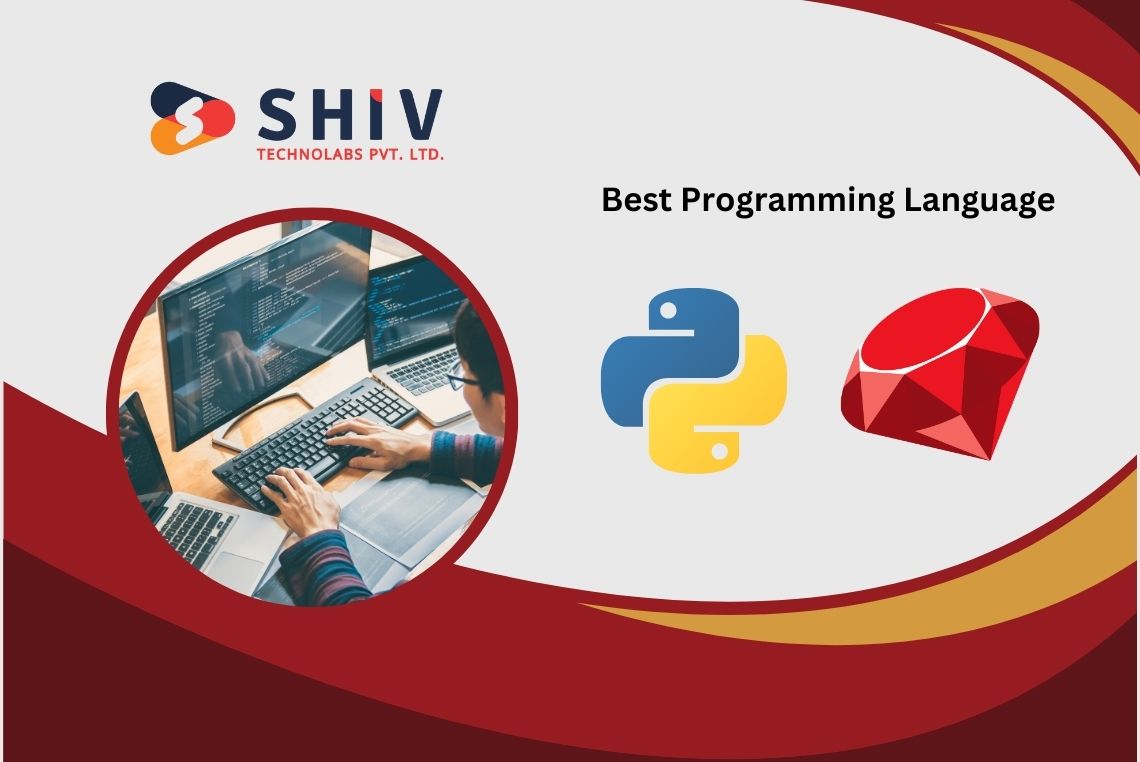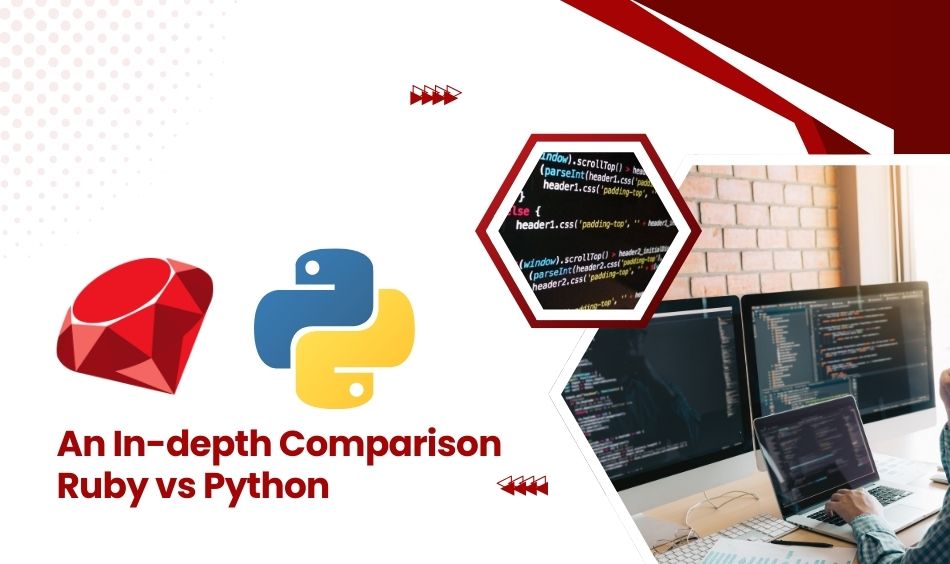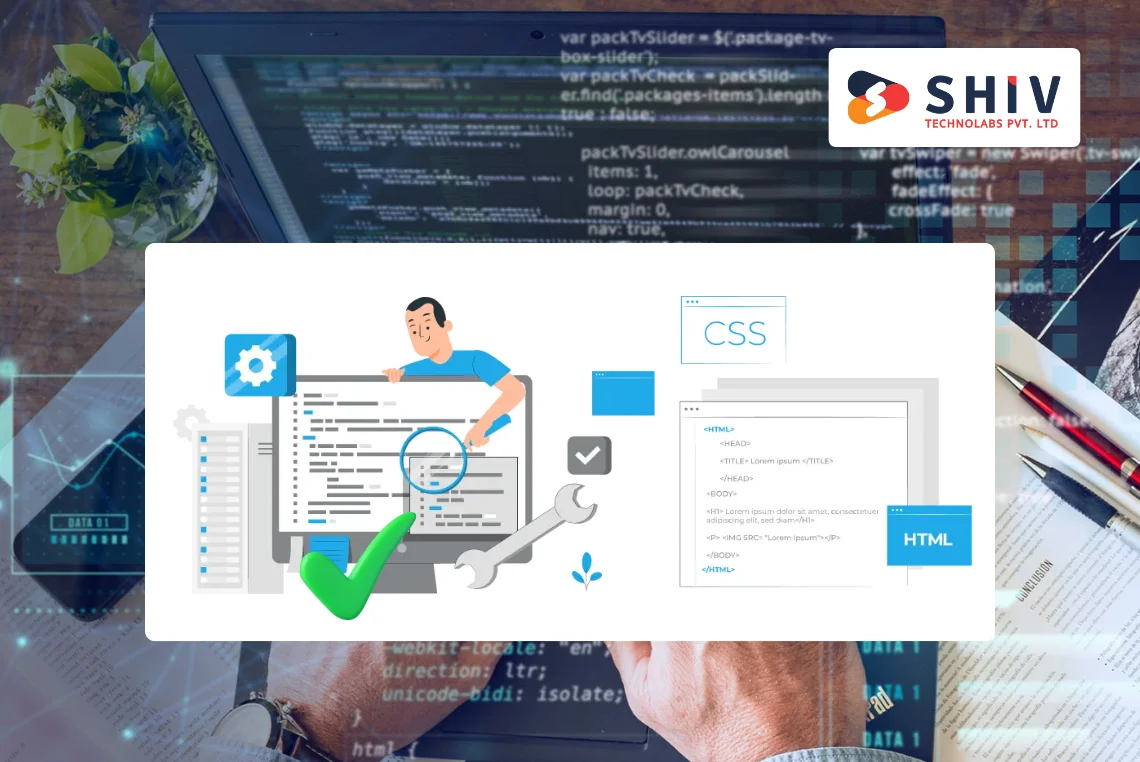Table of Contents
The debate between Ruby and Python often comes down to specific project needs and developer preferences. Both are powerful, high-level languages known for their simplicity and productivity. This blog delves into the characteristics of each language, comparing their strengths and use cases to help you decide which might be best for your next project.
Introduction
Programming languages play a crucial role in software development, influencing everything from the ease of writing code to the efficiency of the final product. Ruby and Python are two popular languages that often come up in discussions about web development, automation, and data science. Understanding their differences and respective advantages can help you make an informed choice for your project.
What is Ruby: Overview

Ruby, created by Yukihiro Matsumoto in the mid-1990s, is known for its focus on simplicity and productivity. It emphasizes human-friendly syntax and is designed to make programming fun and efficient. Ruby is dynamically typed, meaning you don’t need to declare the type of variable before using it. This flexibility allows for rapid development but can sometimes lead to runtime errors if not carefully managed.
Ruby’s most famous framework, Ruby on Rails, revolutionized web development by introducing convention over configuration and promoting RESTful application design. Rails simplifies the creation of complex web applications by providing a lot of built-in functionality, enabling developers to focus on the unique aspects of their projects.
What is Python: Overview
Python, developed by Guido van Rossum and released in 1991, is a versatile language that prioritizes readability and simplicity. Python’s syntax is clean and straightforward, making it an excellent choice for beginners and experienced developers alike. It is also dynamically typed, but its emphasis on readability and explicit coding style helps mitigate some of the issues associated with dynamic typing.
Python is widely used in various domains, including web development, scientific computing, data analysis, artificial intelligence, and automation. Its extensive standard library and active community contribute to its status as a go-to language for many developers. Frameworks like Django and Flask have made Python a popular choice for web development, while libraries like NumPy, pandas, and TensorFlow have cemented its role in data science and machine learning.
Ruby vs Python – Comparison Table
| Feature | Ruby | Python |
|---|---|---|
| Syntax | Elegant, flexible | Simple, readable |
| Typing | Dynamic | Dynamic |
| Main Frameworks | Ruby on Rails | Django, Flask |
| Popular Use Cases | Web development, scripting | Web development, data science, automation |
| Performance | Generally slower than Python | Generally faster than Ruby |
| Community Support | Strong, but smaller than Python’s | Very strong and extensive |
| Learning Curve | Steeper due to flexibility | Gentler due to simplicity |
| Key Philosophy | Developer happiness | Readability and simplicity |
| Memory Management | Automatic through garbage collection | Automatic through garbage collection |
| Concurrency | GIL limits true parallelism, uses green threads | GIL limits true parallelism, better async I/O |
| Error Handling | Exceptions | Exceptions |
| Standard Library | Comprehensive but less than Python’s | Extensive and versatile |
| Package Management | Gems | Pip |
| Framework Speed | Fast for small applications, slower as complexity grows | Generally fast, varies by framework |
| Scalability | Moderate | High |
| Multithreading Support | Limited due to GIL | Limited due to GIL, better with async libraries |
| Ecosystem for Data Science | Limited | Extensive |
| Testing Support | RSpec, MiniTest | Unittest, PyTest |
| IDE Support | Good (RubyMine, VS Code) | Excellent (PyCharm, VS Code, Jupyter) |
An In-depth Comparison – Ruby vs Python
# Syntax and Readability
Ruby’s syntax is designed to be intuitive and flexible, allowing developers to write code in a way that feels natural. This flexibility can lead to multiple ways to accomplish the same task, which can be both a strength and a weakness. Ruby’s focus on human-friendly syntax means that the code can often read like natural language, which can make development faster and more enjoyable for some programmers.
Also Read:- Node.js or Python: Which Backend Technology is Best for Your Website?
Python, on the other hand, enforces a single, obvious way to perform tasks, which can make the code more predictable and easier to read, especially for those new to the language. Python’s use of indentation to define code blocks, rather than curly braces or keywords, contributes to its readability. This design choice forces a clean and consistent coding style, reducing the chances of errors and improving maintainability.
# Performance
When it comes to performance, Python generally has an edge over Ruby. Python’s execution speed is often faster, making it a better choice for performance-critical applications. However, the actual performance difference might be negligible for many typical web applications, where the efficiency of the underlying frameworks and libraries plays a more significant role.
Ruby, while generally slower in execution compared to Python, can still perform well for many applications, especially when leveraging the Rails framework. Rails optimizations and the ability to scale horizontally can mitigate some performance concerns. However, for applications that require intense computation or real-time processing, Python’s performance advantage becomes more pronounced.
# Community and Ecosystem
Python boasts a larger community and a more extensive ecosystem than Ruby. This means more libraries, tools, and resources are available for Python developers. The active community also means that bugs are more likely to be quickly identified and fixed, and there are more tutorials, forums, and conferences for learning and networking.
Ruby’s community, while smaller, is known for its passionate and supportive nature. The Ruby on Rails framework has a dedicated following and provides comprehensive tools for web development, which can simplify many aspects of creating web applications. Ruby’s culture emphasizes developer happiness, which is reflected in the community’s approach to problem-solving and collaboration.
# Frameworks
Ruby on Rails is a highly opinionated framework that follows the convention over configuration principle. This means it provides a lot of default behavior, reducing the need for configuration and allowing developers to get applications up and running quickly. However, this can also mean that deviating from the “Rails way” can be challenging.
Python offers several web frameworks, with Django and Flask being the most prominent. Django is a high-level framework that encourages rapid development and clean, pragmatic design. It includes many built-in features, making it suitable for larger applications. Flask, on the other hand, is a micro-framework that provides the essential tools needed to get a web application running, giving developers more flexibility in how they structure their projects.
Both frameworks have their merits. Rails excels in providing a rich, cohesive development experience out of the box, while Django offers a similar experience but with a bit more flexibility. Flask’s minimalist approach appeals to those who prefer building applications piece by piece, selecting only the components they need.
Also Read:- Can We Use Python as a Backend for a Flutter App?
# Use Cases
Ruby: Ruby is often chosen for web development, especially with Ruby on Rails, which excels at creating database-backed web applications. Its elegant syntax and productivity-focused design make it a good choice for startups and projects where rapid development is essential.
Python: Python’s versatility makes it suitable for a wide range of applications. It’s a preferred language for data science, machine learning, and automation due to its extensive libraries and tools. Python is also popular for web development with frameworks like Django and Flask, and it is commonly used in scientific computing and academic research.
Python vs Ruby: When To Choose What?
Choose Ruby if:
- Your primary goal is rapid web development with a focus on convention over configuration. Ruby on Rails excels in environments where quick development and adherence to conventions can lead to efficient project delivery.
- You appreciate a language designed for developer happiness and elegant code. Ruby’s philosophy emphasizes developer happiness and code elegance, making it a strong choice if these factors are important to you.
- You are working on a project where Ruby on Rails can shine, such as a web application with complex database interactions. Ruby on Rails is particularly well-suited for projects involving complex database interactions due to its built-in ORM and powerful features for managing database schemas.
Choose Python if:
- You need a versatile language that can handle web development, data analysis, automation, and more. Python’s flexibility makes it suitable for a wide range of applications beyond web development.
- Readability and simplicity are top priorities, particularly if you are working with a large team or maintaining code over time. Python’s simple and readable syntax is beneficial for collaborative work and long-term maintenance.
- You require a large ecosystem of libraries and tools, especially for data science, machine learning, or scientific computing. Python has an extensive ecosystem with libraries like Pandas, NumPy, and TensorFlow that support a wide range of data-related tasks.
Final Thoughts
In conclusion, both Ruby and Python are powerful, high-level programming languages with distinct advantages. Ruby’s focus on simplicity and developer happiness, combined with the Rails framework, makes it an excellent choice for web development projects that require rapid prototyping and development. Python’s readability, versatility, and extensive ecosystem make it a preferred language for a wide range of applications, from web development and automation to data science and machine learning.
When choosing between Ruby and Python, consider the specific needs of your project, your team’s expertise, and the language’s ecosystem. Both languages have vibrant communities and offer robust tools and frameworks to support your development efforts. By understanding the unique strengths and use cases of Ruby and Python, you can make an informed decision that aligns with your project’s goals and your development style. For those looking for professional assistance, Shiv Technolabs offers top-notch Python development services. As a leading Python development company in Saudi Arabia, we provide expert solutions tailored to your specific requirements.




















